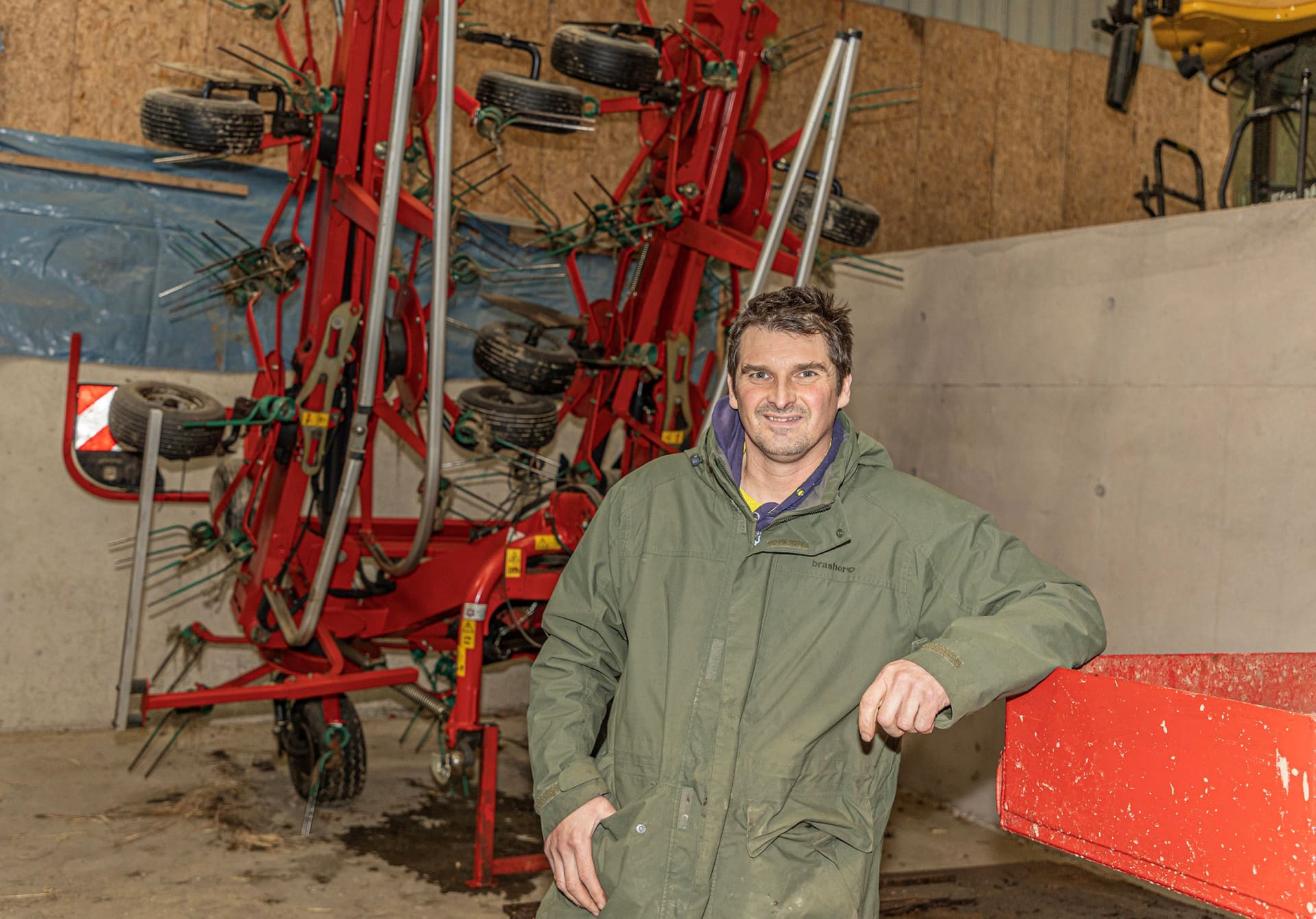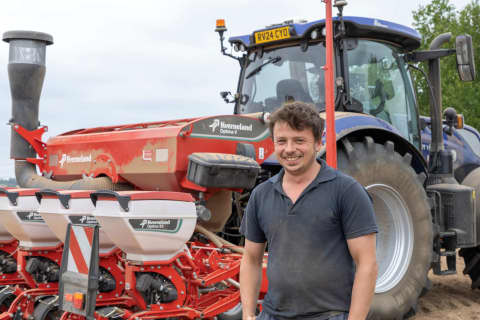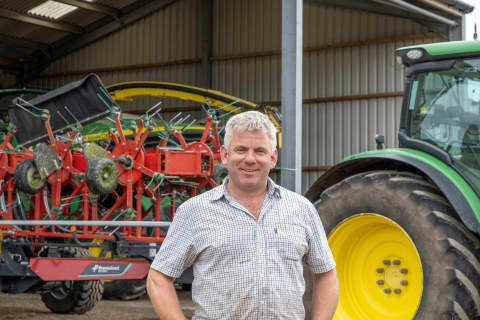“Weather windows have become really tight, so if we can shorten drying times to get forage in the clamps much sooner for our customers, then all the better,” explains Stevie. From Cardeston Park Farm in UK, Edwards and Son operates a general contracting business alongside its farming activities. The predominantly arable and slurry-focussed contractor dips its toes into the grass sector with a tedding service for several large-scale dairy farming customers. “We bought into the tedding sector as a friend was getting out, acquiring his kit and customers,” he says. “We’ve since increased our tedder capacity and have a total of three Kverneland models that have been sourced through Battlefield Machinery.”
A pair of 10-rotor Kverneland 85112 tractor-mounted tedders handle the lion’s share of the work, with a smaller 8-rotor Kverneland 8590 tedder kept as a back-up. “Tedding is that one job which demands 100% reliability,” he says. “We work ahead of two silage contractors to get the grass tedded out, so we’re usually 30 minutes behind their mowers to make the most of wilting times.” Stevie says experience has proved that each double tine needs to be roped through the spring coils, with spare tines and rotor wheels being the most frequently used spare parts. “Broken tines and punctures are our nemesis, particularly in the rougher fields,” he says. “And if a tine snaps, rope through the coils mean they don’t get found by the forager’s metal detector.”

With customers making up to four cuts of silage, he says the workload can be around 3,500-4,000 acres/year. “Each season is different with the weather, but with a forager hunting down 150 acres/day, we need to be tedding 150 acres as quickly and efficiently as possible,” adds Stevie. “With two 10-rotor machines, we can cover that area in just five hours. Or have the ability to send them in two directions to different customers.”




